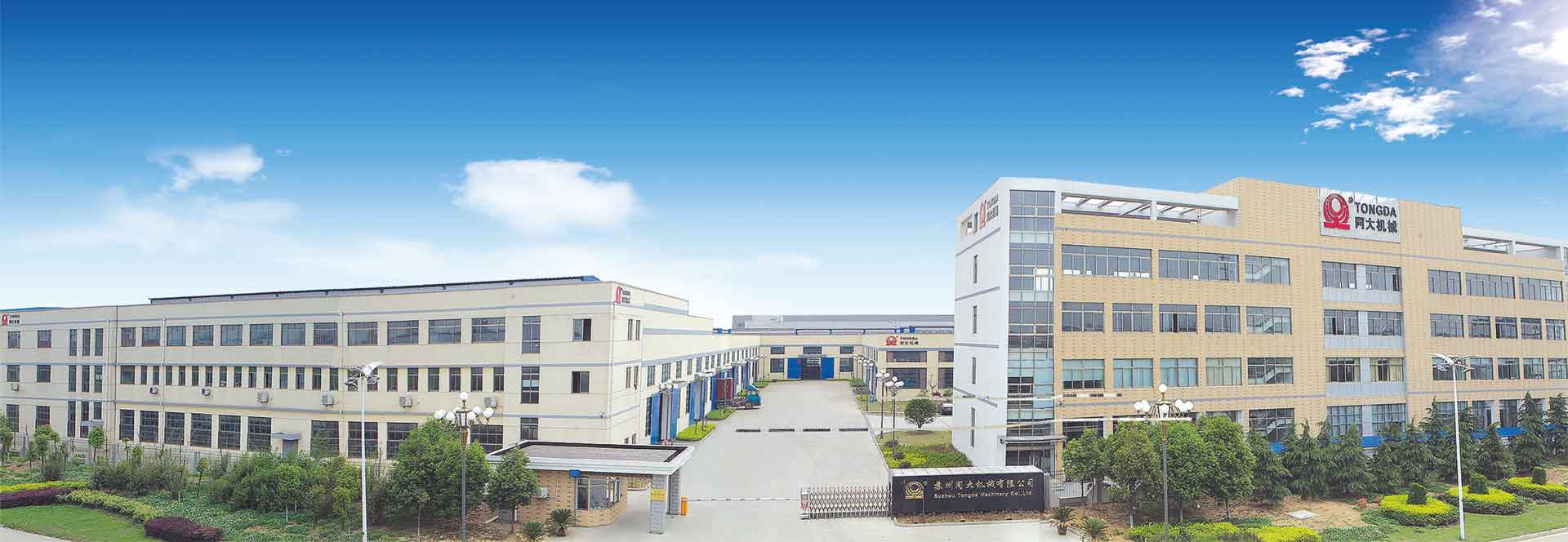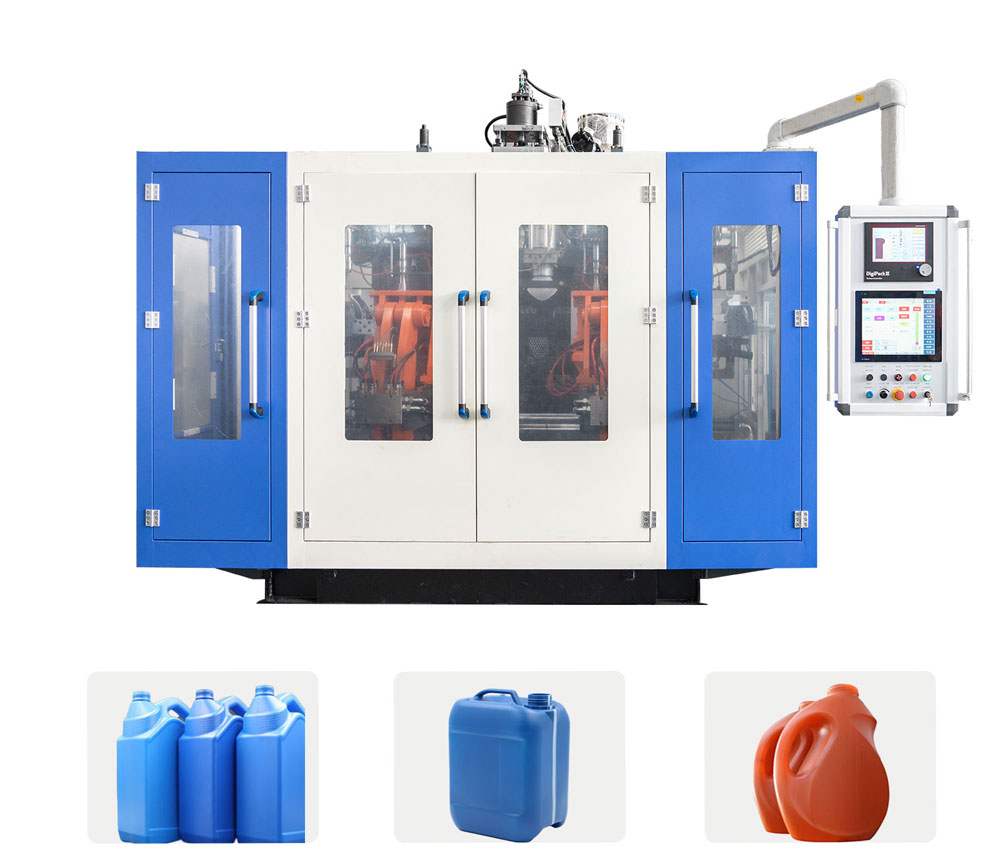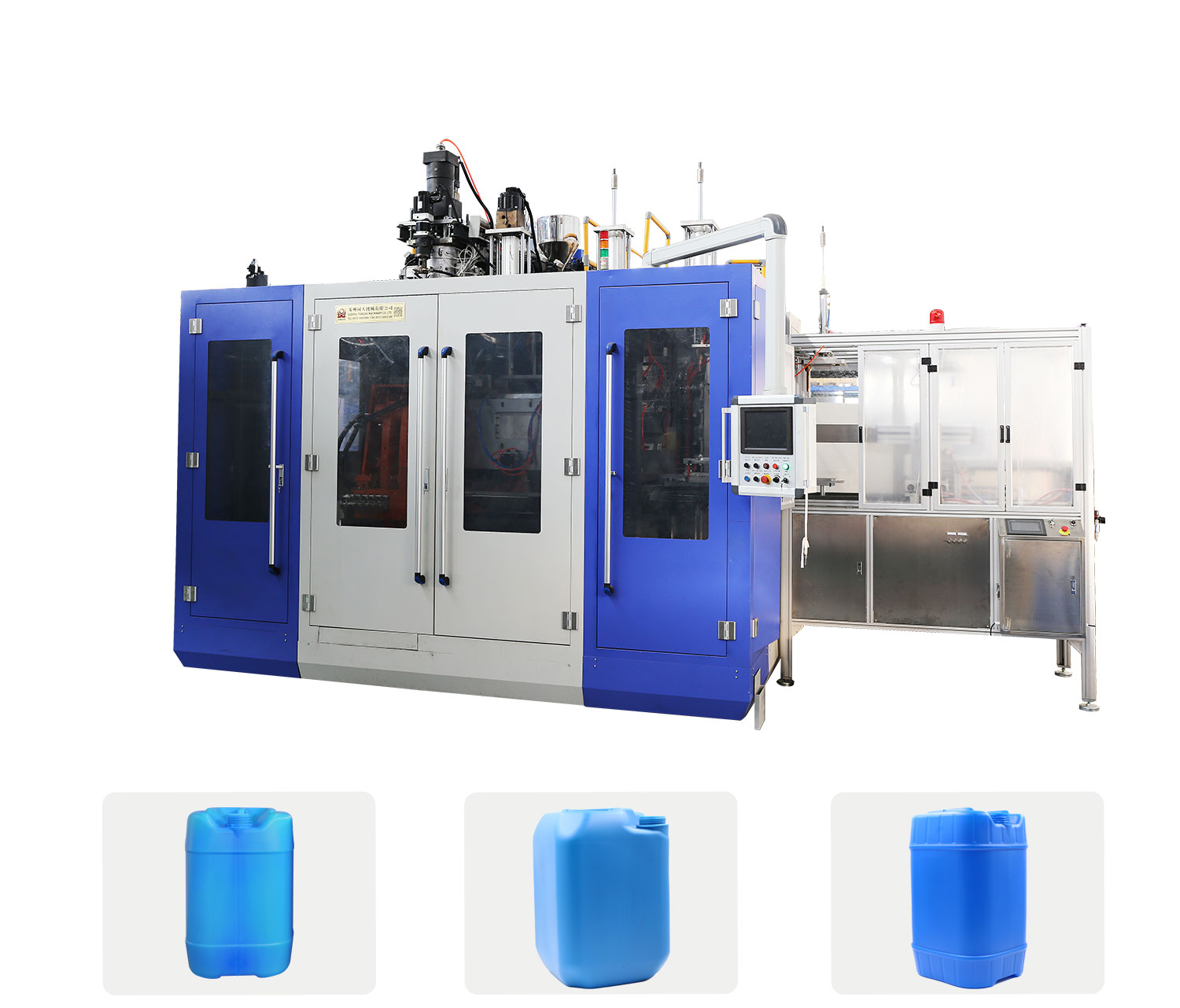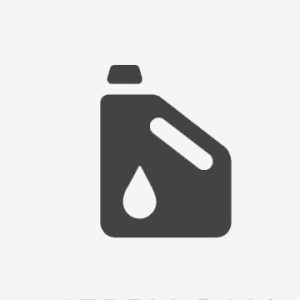Analysis of related problems encountered in blow molding opportunities during blow molding

The following nine points are the conditions that our blow molding machine manufacturers and hollow blow molding machines generally encounter. Let us analyze them and hope to help them.
The first point: the eccentricity of the plastic bottle bottom, and the plastic preform temperature, stretching, pre-blowing, high-pressure blowing, etc. may be related.
The second point: when the bottom of the plastic bottle is white, it is usually due to excessive stretching, or the plastic preform is too cold, or the pre-blowing pressure is too high, or the pre-blowing is too early. The third point: the partial whitishness of the plastic bottle is generally due to excessive stretching, or the whitish temperature is too low, or the stretching rod is encountered, or the pre-blowing is too early.
The fourth point: the case of thick upper and lower thinner, generally because the pre-blowing is too early, can reduce the pre-blowing pressure, or reduce the air flow, or delay the pre-blowing time.
The fifth point: the plastic bottle bottom has a magnifying glass phenomenon, generally because the pre-blowing is too late, or the pre-blowing pressure is too low, or the plastic bottle bottom material is too much. Sixth point: The case of thicker and thinner is generally because the pre-blowing is too late, the pre-blowing pressure can be increased, or the airflow can be increased, or the pre-blowing time can be advanced.
Seventh point: The turbidity of the entire plastic bottle is generally due to insufficient cooling. Eighth point: There are wrinkles in the bottom of the plastic bottle, generally because the pre-blowing is too late, or the flow rate is too small, or the pressure is too low, or the bottom temperature is too high.
The ninth point: When the plastic bottle neck is wrinkled, it is generally because the plastic preform at the plastic bottle neck is not well cooled, or the pre-blowing is too late, or the pre-blowing pressure is too low.The following nine points are the conditions that our blow molding machine manufacturers and hollow blow molding machines generally encounter. Let us analyze them and hope to help them.
The first point: the eccentricity of the plastic bottle bottom, and the plastic preform temperature, stretching, pre-blowing, high-pressure blowing, etc. may be related.
The second point: when the bottom of the plastic bottle is white, it is usually due to excessive stretching, or the plastic preform is too cold, or the pre-blowing pressure is too high, or the pre-blowing is too early. The third point: the partial whitishness of the plastic bottle is generally due to excessive stretching, or the whitish temperature is too low, or the stretching rod is encountered, or the pre-blowing is too early.
The fourth point: the case of thick upper and lower thinner, generally because the pre-blowing is too early, can reduce the pre-blowing pressure, or reduce the air flow, or delay the pre-blowing time.
The fifth point: the plastic bottle bottom has a magnifying glass phenomenon, generally because the pre-blowing is too late, or the pre-blowing pressure is too low, or the plastic bottle bottom material is too much. Sixth point: The case of thicker and thinner is generally because the pre-blowing is too late, the pre-blowing pressure can be increased, or the airflow can be increased, or the pre-blowing time can be advanced.
Seventh point: The turbidity of the entire plastic bottle is generally due to insufficient cooling. Eighth point: There are wrinkles in the bottom of the plastic bottle, generally because the pre-blowing is too late, or the flow rate is too small, or the pressure is too low, or the bottom temperature is too high.
The ninth point: When the plastic bottle neck is wrinkled, it is generally because the plastic preform at the plastic bottle neck is not well cooled, or the pre-blowing is too late, or the pre-blowing pressure is too low.
The first point: the eccentricity of the plastic bottle bottom, and the plastic preform temperature, stretching, pre-blowing, high-pressure blowing, etc. may be related.
The second point: when the bottom of the plastic bottle is white, it is usually due to excessive stretching, or the plastic preform is too cold, or the pre-blowing pressure is too high, or the pre-blowing is too early. The third point: the partial whitishness of the plastic bottle is generally due to excessive stretching, or the whitish temperature is too low, or the stretching rod is encountered, or the pre-blowing is too early.
The fourth point: the case of thick upper and lower thinner, generally because the pre-blowing is too early, can reduce the pre-blowing pressure, or reduce the air flow, or delay the pre-blowing time.
The fifth point: the plastic bottle bottom has a magnifying glass phenomenon, generally because the pre-blowing is too late, or the pre-blowing pressure is too low, or the plastic bottle bottom material is too much. Sixth point: The case of thicker and thinner is generally because the pre-blowing is too late, the pre-blowing pressure can be increased, or the airflow can be increased, or the pre-blowing time can be advanced.
Seventh point: The turbidity of the entire plastic bottle is generally due to insufficient cooling. Eighth point: There are wrinkles in the bottom of the plastic bottle, generally because the pre-blowing is too late, or the flow rate is too small, or the pressure is too low, or the bottom temperature is too high.
The ninth point: When the plastic bottle neck is wrinkled, it is generally because the plastic preform at the plastic bottle neck is not well cooled, or the pre-blowing is too late, or the pre-blowing pressure is too low.The following nine points are the conditions that our blow molding machine manufacturers and hollow blow molding machines generally encounter. Let us analyze them and hope to help them.
The first point: the eccentricity of the plastic bottle bottom, and the plastic preform temperature, stretching, pre-blowing, high-pressure blowing, etc. may be related.
The second point: when the bottom of the plastic bottle is white, it is usually due to excessive stretching, or the plastic preform is too cold, or the pre-blowing pressure is too high, or the pre-blowing is too early. The third point: the partial whitishness of the plastic bottle is generally due to excessive stretching, or the whitish temperature is too low, or the stretching rod is encountered, or the pre-blowing is too early.
The fourth point: the case of thick upper and lower thinner, generally because the pre-blowing is too early, can reduce the pre-blowing pressure, or reduce the air flow, or delay the pre-blowing time.
The fifth point: the plastic bottle bottom has a magnifying glass phenomenon, generally because the pre-blowing is too late, or the pre-blowing pressure is too low, or the plastic bottle bottom material is too much. Sixth point: The case of thicker and thinner is generally because the pre-blowing is too late, the pre-blowing pressure can be increased, or the airflow can be increased, or the pre-blowing time can be advanced.
Seventh point: The turbidity of the entire plastic bottle is generally due to insufficient cooling. Eighth point: There are wrinkles in the bottom of the plastic bottle, generally because the pre-blowing is too late, or the flow rate is too small, or the pressure is too low, or the bottom temperature is too high.
The ninth point: When the plastic bottle neck is wrinkled, it is generally because the plastic preform at the plastic bottle neck is not well cooled, or the pre-blowing is too late, or the pre-blowing pressure is too low.











